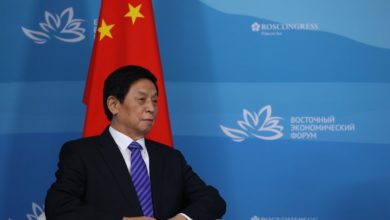Harnessing Collective Action to Green the Grid

Shuli Goodman talks a lot about building the next generation of clean energy, but she doesn’t just mean erecting fields of solar panels and wind turbines. As the director of Linux Foundation Energy (LF Energy), launched by the nonprofit Linux Foundation in 2018, she’s interested in another kind of infrastructure that she says will be essential to moving the world’s grids away from fossil fuels and cutting carbon dioxide emissions: open-source software.
Many of the power systems we use today are based on an old hundred-year-old model. Centralized power plants that run on fossil fuels produce an inexorable stream of electricity. This energy is then pushed out through a grid, first via long-distance high voltage transmission wires and then to lower voltage community energy system. That centralized approach creates a lot of wasted electricity, because it’s difficult to match electricity supply being produced at power plants with demand in homes and businesses. This means power companies must keep many dirty and fossil-fuel generators ready to go, so they can start them when there is a high demand.
A new, cleaner system would run on renewable energy and use software to automatically choreograph energy flows from wind and solar plants—which produce electricity intermittently, when the sun is shining or the wind is blowing—along with grid-scale batteries, electric vehicles (EV) plugged into the grid, and other sources of stored energy in order to balance electrical supply and demand. This network would make use of the latest computers and sensors to be more efficient and produce significantly less carbon dioxide.
But there’s a fundamental problem in efforts to build that kind of system: electrical utilities and power equipment manufacturers are all using their own software systems and protocols. That will make it difficult for different parts of that new power system—EV charging stations, solar farms, batteries, transformer stations—to talk to one another.
LF Energy is working on software and communication protocols to solve this problem. This would allow all of the pieces of a new electric grid to speak the same language. It’s similar to how the designers of the internet created protocols to enable computers to communicate with each other. Goodman believes such a system will enable us to build a more advanced grid faster and with less solar panels. “If you really want to be able to go fast,” says Goodman, “You have to take the time to make sure that you’ve got a foundation that’s under you.”
LF Energy coordinates thousands of engineers worldwide to create the foundation. The software they’re building is open-source, meaning that anyone can use or modify it, saving utility systems from each having to write their own code. European utilities helped get the ball rolling on the project back in 2018—and big tech companies have joined more recently (Microsoft, for example, became a LF Energy member in September 2021). Those companies contribute some of the work on LF Energy’s software; other efforts come from volunteers.
Together, they’re working on projects like ShapeShifter, which began development last year and is meant to help grids route electrical flows through power lines in ways that not only take customer demand and physical constraints into account, but also will try to reduce input from polluting fossil fuel plants. Another project launched in 2019 called Grid Exchange Fabric allows a grid operator to communicate with connected devices, like lightbulbs and dishwashers, to reduce their power consumption during times of peak demand by, for instance, reducing a light bulb’s wattage.
TIME interviewed Goodman about these initiatives and other goals for LF Energy. Goodman also discussed the difficulties in achieving a more sustainable energy system. For clarity and length, the transcript below has been adjusted.
TIME: What would the software you’re building be able to do?
Goodman says that electrons need a physical network. The electrons require a wire, or a line. You can’t send electrons through the air like telecommunications information. Software’s role in power system transformation is to utilize high velocity and high volume data in order to understand the exact physical system, in great detail. This allows it to be managed much like an internet network. So we’re using very similar principles to those that are used for the internet.
What kinds of things can such a networked grid be able to do that we can’t do already?
One of the things about the way we’ve built our energy system is that it’s this always-on thing—there’s just this massive, [constant]The flow of electrons throughout a system. You flip the switch and the light will turn on. But there are very few controls that actually allow us to use those electrons more at times of day when perhaps there’s a lot more electrons flowing through the system, because, say, there’s a lot of sun or a lot of wind. [Software] allows us what I will refer to as radical energy efficiency, where we’re maximizing every electron and continuing to provide the same results. And with that, we are going to create greater economic efficiency, and I think it’s going to be fantastic for society. We don’t realize how much we’re wasting.
Could you please tell me more about one your projects?
I’m very passionate about a project we have called Everest, which is essentially an EV gateway [a communication system for EV charging infrastructure]. Globally, we are planning to invest trillions in infrastructure that supports electric cars. The risk of creating stranded technologies has increased exponentially if each charging station interprets the information protocol in its own unique way. [in other words, infrastructure that will soon become obsolete]. This would make it difficult to create the internet in a world where Microsoft interprets it one way and Google interprets it differently. Apple, on the other hand, would interpret it in a different way. This video conference would be between you and me. We are having this conversation because there’s a common software base layer that is the same, and everybody uses it.
Do you worry about what happens if we don’t roll out that kind of universal software?
We’re going to have to increasingly run, chew gum, and take care of the baby. Our task is to manage geopolitical conflict, pandemics and climate change. The main thing I worry about is that there’s going to be so many things happening, and it’s going to be largely terrifying to people. My role as leader is to give comfort to my team. I also try to keep them calm. Like, ‘I don’t care what’s going on out there—we have to stay focused.’
Here are more must-read stories from TIME





